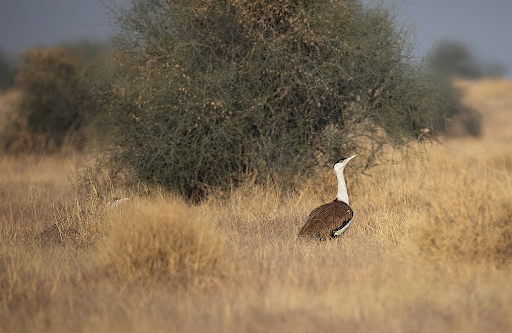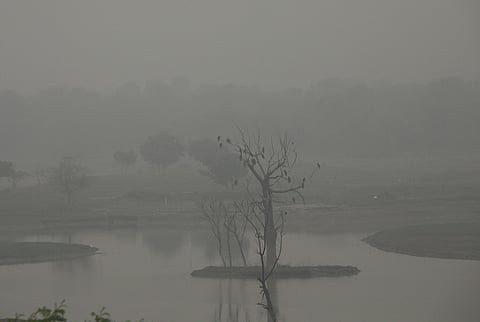




Source: DOWNTOEARTH
Disclaimer: Copyright infringement not intended.
The Union Territory of Ladakh is home to the highest recorded density of snow leopards in the world, with nearly 68 per cent of India’s population of the elusive big cat found in the Union Territory, according to a new study.
Taxonomy and Physical Description
|
Attribute |
Details |
|
Scientific Name |
Panthera uncia |
|
Family |
Felidae |
|
Conservation Status |
Vulnerable (IUCN Red List, 2017) |
|
Habitat |
High-altitude mountains (3,000–5,500 m) |
|
Physical Traits |
Thick fur, long tail, pale smoky-gray coat with black rosettes and spots |
Global Distribution
Found in 12 countries across Central and South Asia: Afghanistan, Bhutan, China, India, Kazakhstan, Kyrgyzstan, Mongolia, Nepal, Pakistan, Russia, Tajikistan, Uzbekistan.
Estimated global population: 3,500 to 7,000 individuals.
Snow Leopard in India
|
Attribute |
Details |
|
Estimated Population (2025) |
709 individuals |
|
States/UTs with presence |
Ladakh, Himachal Pradesh, Uttarakhand, Sikkim, Arunachal Pradesh |
|
Highest Density Region |
Ladakh
477 individuals (≈ 68%)
|
|
Protected Areas |
Hemis National Park, Changthang Wildlife Sanctuary, Kibber Wildlife Sanctuary |
|
Hemis National Park Density |
2.07 individuals/100 km² — Highest in the world |
|
Previous Global High |
1.06–1.84/100 km² (Tibet) |
|
Lowest Density in Ladakh |
Changthang Wildlife Sanctuary |
|
Factor |
Description |
|
Cultural Reverence |
Buddhist values discourage killing; snow leopards seen as part of ecosystem |
|
Prey Abundance |
Blue sheep, ibex, urial, domestic livestock |
|
Rugged Terrain and Low Human Density |
Reduces human-wildlife conflict |
|
Community Involvement |
Local participation in eco-tourism, protection measures |
|
Government Support |
Ladakh Wildlife Department's long-term conservation programs |
|
Metric |
Details |
|
% of individuals with core activity in PAs |
~39% (~185 snow leopards) |
|
% of individuals using PAs for movement |
~57% |
Project Snow Leopard (2009)
Aims to promote conservation in five Himalayan states
Landscape-level, participatory approach
SECURE Himalaya Project (UNDP-GEF)
Focuses on securing livelihoods and biodiversity in high-altitude areas.
Sources:
|
PRACTICE QUESTION Q. Consider the following statements regarding the snow leopard in India:
Which of the above statements is/are correct? A) 1 and 2 only Answer: B) Explanation: Statement 1 is correct As per the recent peer-reviewed study published in PLOS ONE (2025) Hemis National Park in Ladakh recorded a snow leopard density of 2.07 individuals per 100 km², the highest ever recorded in the world, surpassing earlier densities from Tibet (1.06–1.84 per 100 km²). Statement 2 is incorrect Snow leopards were downlisted from Endangered to Vulnerable on the IUCN Red List in 2017. This decision was controversial with experts warning that the downlisting may have been based on incomplete or inconsistent data and could hinder future conservation efforts. Statement 3 is correct The high density of snow leopards in Ladakh is credited to multiple factors The cultural values of Ladakhi people that discourage hunting, Low human population density in the region, Availability of wild and domestic prey, Community-led conservation, especially involving local pastoralists, Consistent efforts by the Ladakh Wildlife Department. |






© 2026 iasgyan. All right reserved